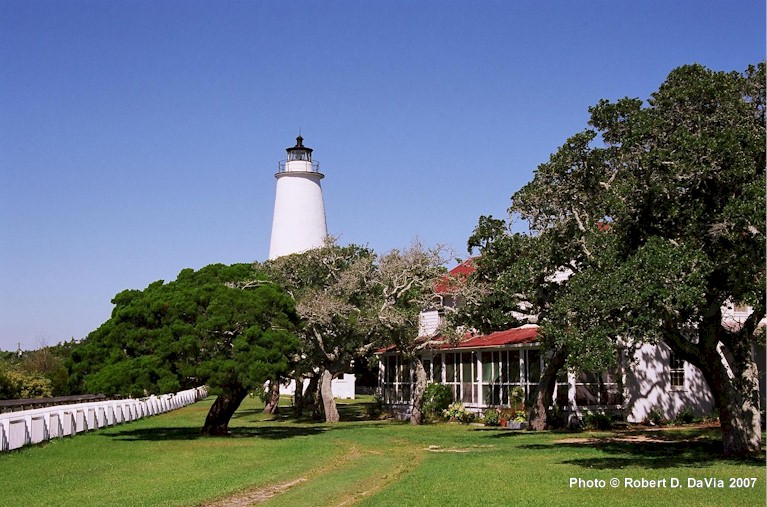
THE OCRACOKE LIGHTHOUSE

(The following is from a National Park Service handout, revised June, 2005)
OCRACOKE LIGHTHOUSE FACTS
HEIGHT: 77 feet 5 inches
STAIRS: 86
LIGHT PATTERN: Fixed Light
BEAM RANGE: 14 Miles
OWNERSHIP: transferred from
US Coast Guard to the
National Park Service in 1999
Ocracoke Inlet was first put on the map when English explorers wrecked a sailing ship there in 1585. Two centuries later this was one of the busiest inlets on the East Coast. Ocracoke Inlet was the only reasonably navigable waterway for ships accessing inland ports such as Elizabeth City, New Bern, and Edenton. Ocracoke Village, then known as Pilot Town, developed as a result of the inlet's use. Pilots hired to steer ships safely through the shifting channels to mainland ports settled the village in the 1730's.
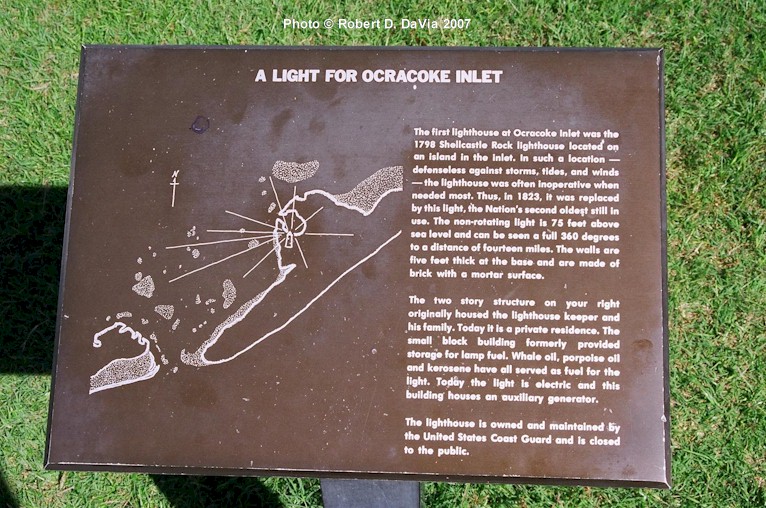
Text of sign shown at left
The first lighthouse at
Ocracoke Inlet was the 1798 Shellcastle Rock lighthouse located on an island in
the inlet. In such a location - defenseless against storms, tides, and winds -
the lighthouse was often inoperative when needed most. Thus, in 1823, it was
replaced by this light, the Nation's second oldest still in use. The
non-rotating light is 75 feet above sea level and can be seen a full 360 degrees
to a distance of fourteen miles. The walls are five feet thick at the base and
are made of brick with a mortar surface.
The two structures to your right originally housed the lighthouse keeper and his
family. Today it is a private residence. The small block building formerly
provided storage for lamp fuel. Whale oil, porpoise oil and kerosene have all
served as fuel for the light. Today the light is electric and this building
houses an auxiliary generator.
The lighthouse is owned and maintained by the United States Coast Guard and is
closed to the public.
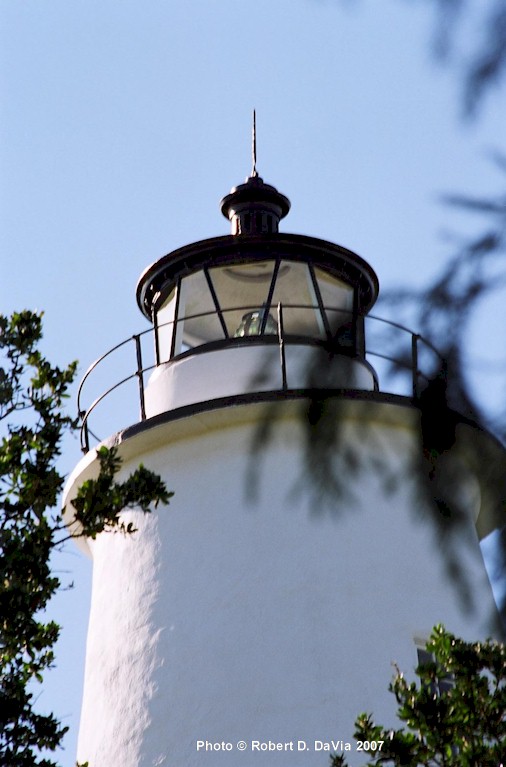
The U.S. Lighthouse Service recognized that a lighthouse was needed at Ocracoke Inlet to assist mariners. In 1794, construction began on Shell Castle Island, a 25-acre, shell covered island located between Ocracoke and Portsmouth Island to the south. This site was adjacent to the deepest inlet channel between shallow Pamlico Sound and the ocean. The wooden, pyramid-shaped tower was completed four years later. Nearby on the island, a small light keeper's house was built along with several cargo wharves, gristmills, houses, and other facilities.
The lighthouse, a great blessing to mariners, was obsolete in less than 30 years due to migration of the main channel. By 1818, the channel had shifted nearly a mile away. That same year, both the lighthouse and keeper's house were destroyed by lightning.
In 1822, for a charge of $50, the federal government purchased two acres at the south end of Ocracoke Island as the site for a new lighthouse. Constructed by Massachusetts's builder Noah Porter and finished in 1823, the tower still stands today. Total cost, including the one story, one bedroom light keeper's house, was $11,359, far below the $20,000 budgeted.
The lighthouse stands about 75 feet tall. Its diameter narrows from 25 feet at the base to 12 feet at its peak. The walls are solid brick - - 12 feet thick at the bottom tapering to two feet at the top. An octagonal lantern crowns the tower and houses the light beacon.
The exterior's solid white coloration serves as its identifying mark to mariners by day. The original whitewash "recipe" called for blending lime, salt, spanish whiting, rice, glue and boiling water. The mixture was applied while still hot.
A fourth-order Fresnel lens was installed in 1854, replacing the old reflector system. Its hand-cut prisms and magnifying glass greatly intensified the light. Early in the Civil War the lens was dismantled by the Confederates but re-installed in 1864 by Union Forces. Originally an oil-burning light, the Ocracoke Light was electrified in the early decades of the 1900's. The present light is equal to 8,000 candlepower and casts a stationary beam that can be seen 14 miles at sea. A battery powered back-up light operates during power failures.
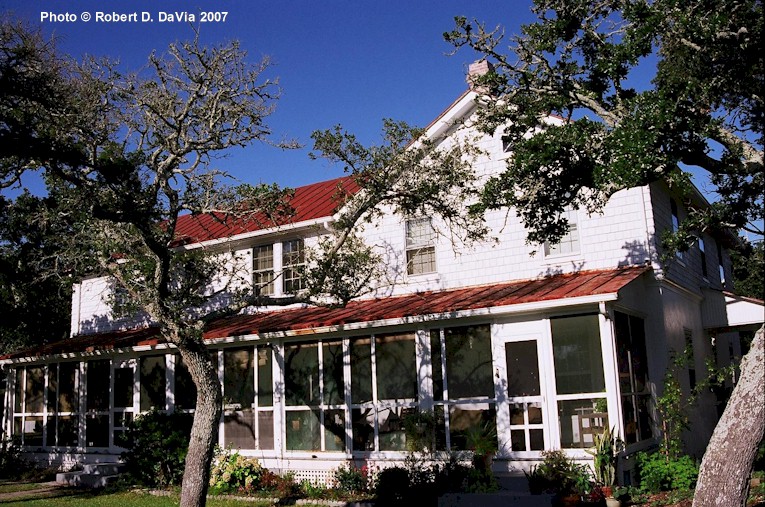
As duties at the light station increased, an assistant keeper position was established. To house the additional keeper and his family, a second story was built onto the original quarters in 1897 and another section was added in 1929. The double keepers' quarters still stand on the site today, along with a generator house, once the oil supply shed.
Keepers performed a wide range of duties. Maintaining the buildings and grounds, hauling oil, trimming wicks, and polishing the lens were part of a well-trained light keeper's regulated life.
Ocracoke lighthouse keepers fished, raised livestock and planted gardens. Due to the proximity of the village, the keepers and their families enjoyed a social life on Ocracoke and their children were schooled in the village. The Lighthouse Service provided a traveling library to their isolated employees. Cases of library books were circulated every six months to light stations along the coasts.
During hurricanes the light station served as a place of refuge for some local residents. Situated on higher ground, the complex often remained above flood waters. Villagers, sometimes arriving by boats which navigated inundated roadways, waited out the storm in the keepers' home.
Fully automated, the lighthouse no longer needs a resident light keeper to tend to its daily needs. The United States Coast Guard now oversees the operation of the light.
In 1988, the National Park Service, U.S. Coast Guard, and the North Carolina State Historic Preservation Office agreed to work together in preserving this National Historic Landmark. Through federal grants, the National Park Service conducted a structural analysis of the lighthouse. Preservation work was then performed on the tower's windows, door and brick walls.
The Ocracoke Light is the second oldest operating lighthouse in the nation. With its aid, yesterday's sailing vessels safely navigated the channels. Today, fishing and pleasure boats pass within its view. Time, however, has not changed the often tricky character of the shoal-ridden inlet. The historic lighthouse still stands by to make safe the waters.
Though the lighthouse is not open for climbing, the site can be visited daily.
The lighthouse grounds are not usually open to the public. There is a boardwalk that goes along the fence that visitors can use to get close to the lighthouse.
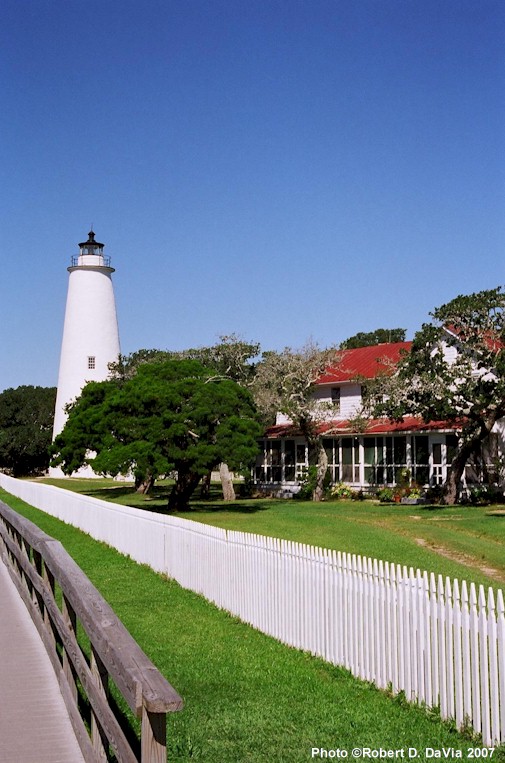
The pictures below were taken from inside the fence on Friday, October 12, 2007. We were allowed inside the fence, because we were from the Outer Banks Lighthouse Society, on Ocracoke Island for our annual Keeper's Weekend. Earl O'Neal, a local historian, met us at the lighthouse and gave a talk inside the light, at the base of the stairs. I didn't hear his talk: I was too busy outside taking pictures. As the grounds are normally off-limits to visitors, these may be some views not seen elsewhere.
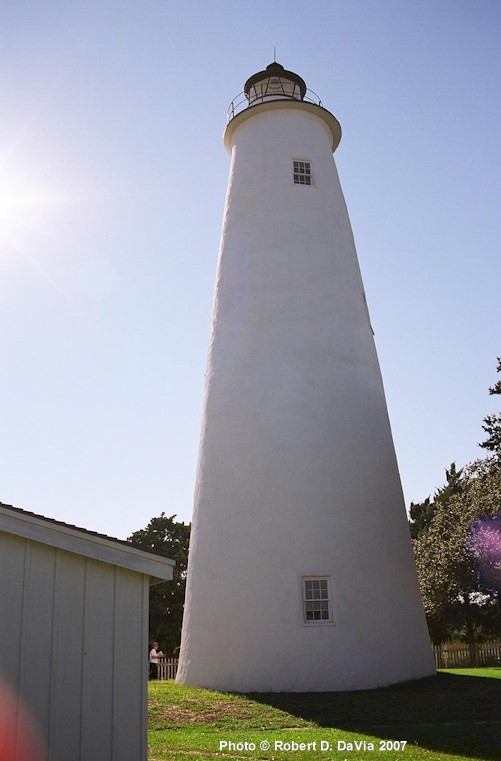

(LEFT) Oil shed to the left of the tower, now houses an
auxiliary generator. (RIGHT) Notice the Fresnel Lens?
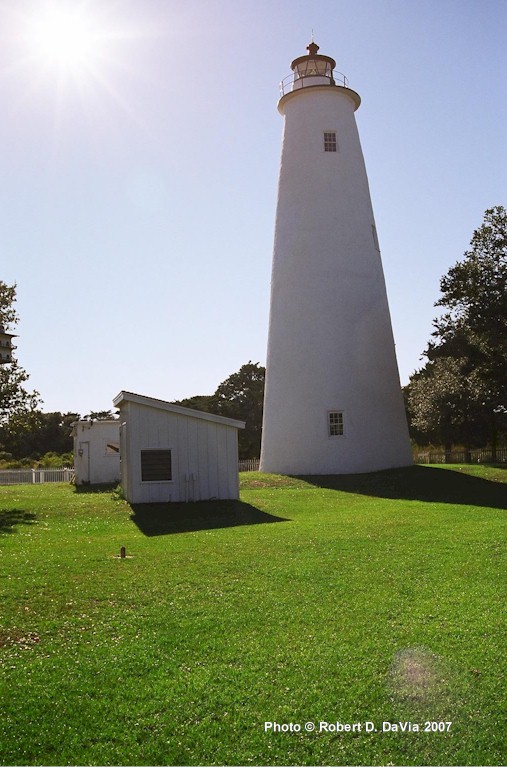
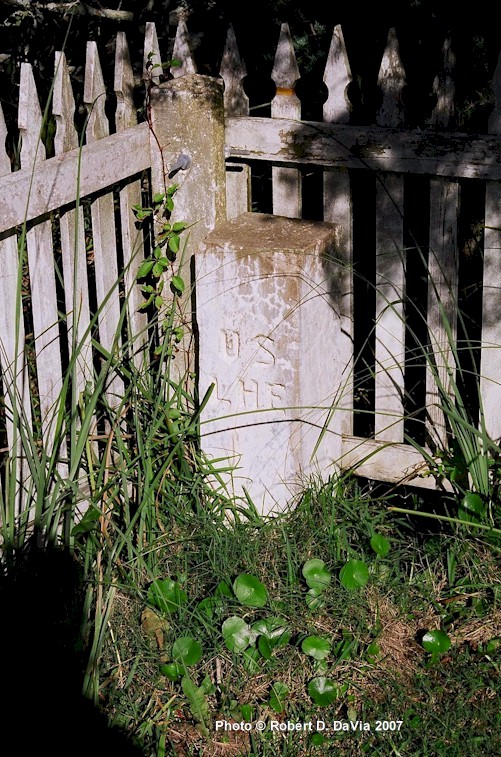
(LEFT) From inside the lighthouse grounds, showing the oil
house (auxiliary generator). (RIGHT) USLHE Granite Marker
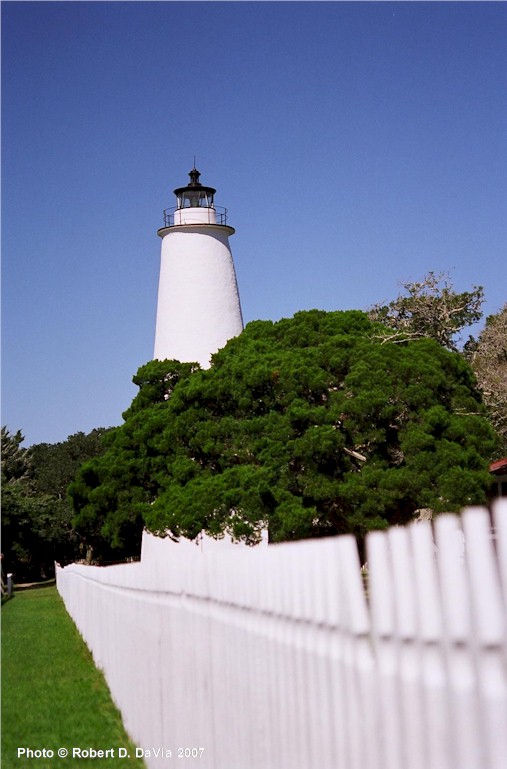
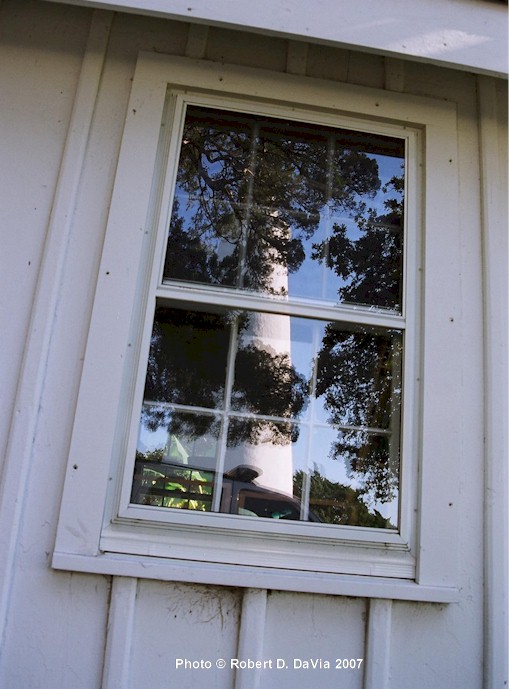
The images below are of the stairway inside the lighthouse. Although we were allowed on the lighthouse grounds, we did not climb the lighthouse.
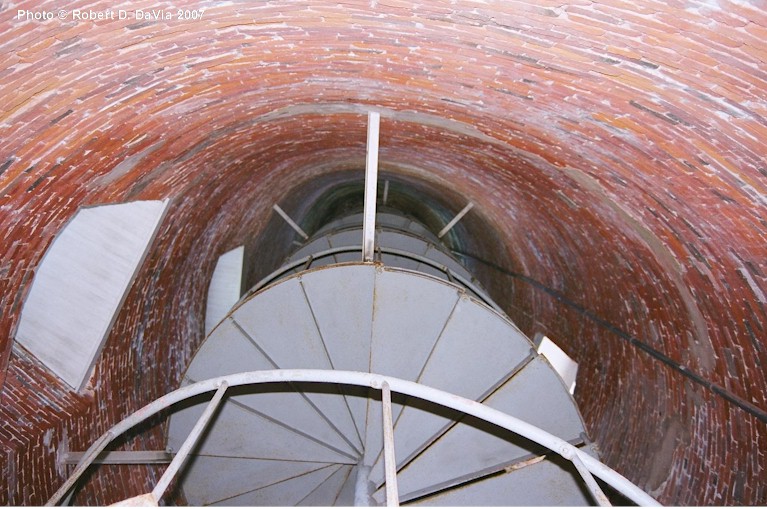
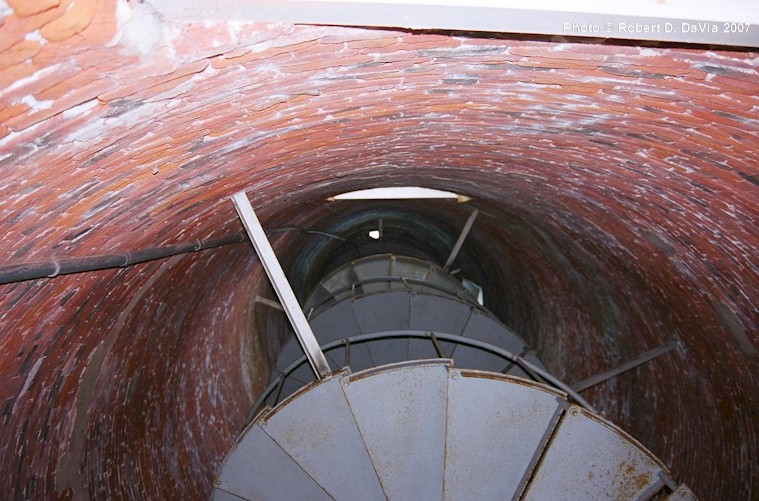
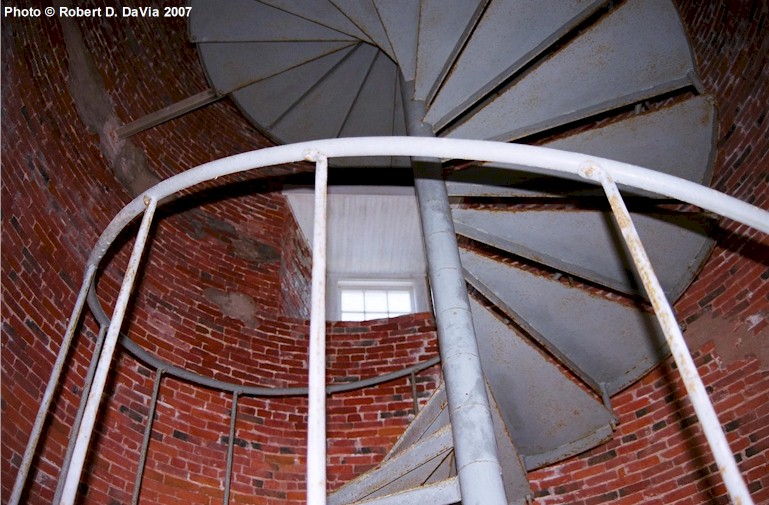
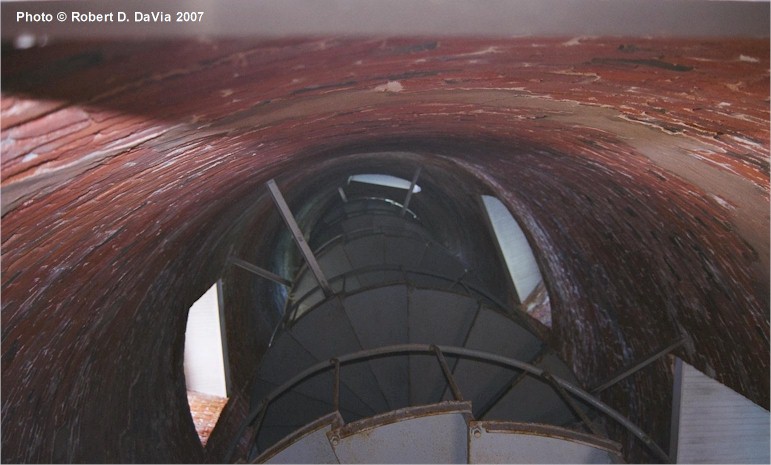
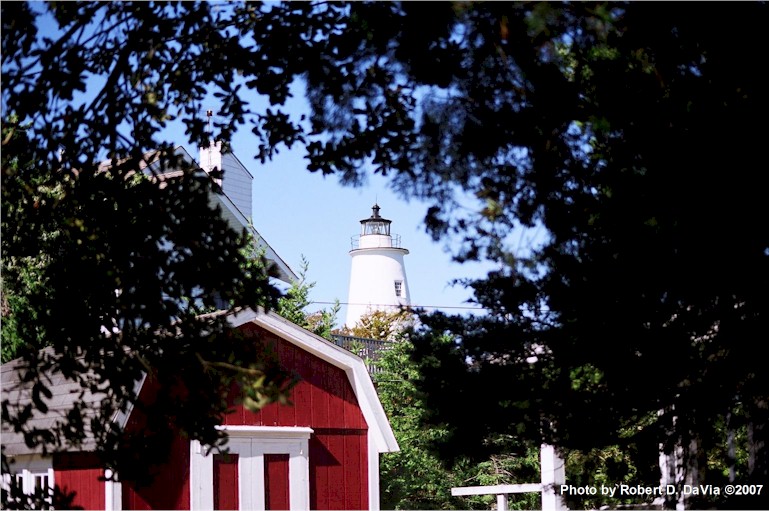
As seen from the ferry into Ocracoke.
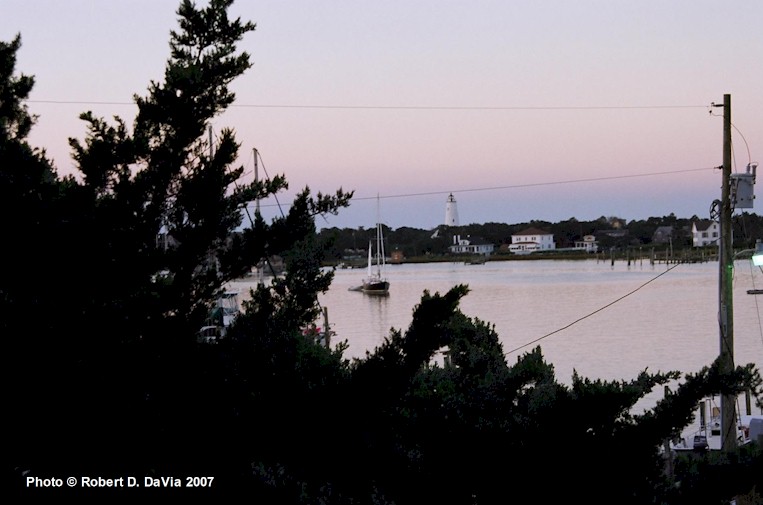
The lighthouse across Silver Lake, from the 3rd floor balcony of The Anchorage Hotel and Marina
Return to the North Carolina State Page
Return to the: Alphabetical Listing or the Listing by States